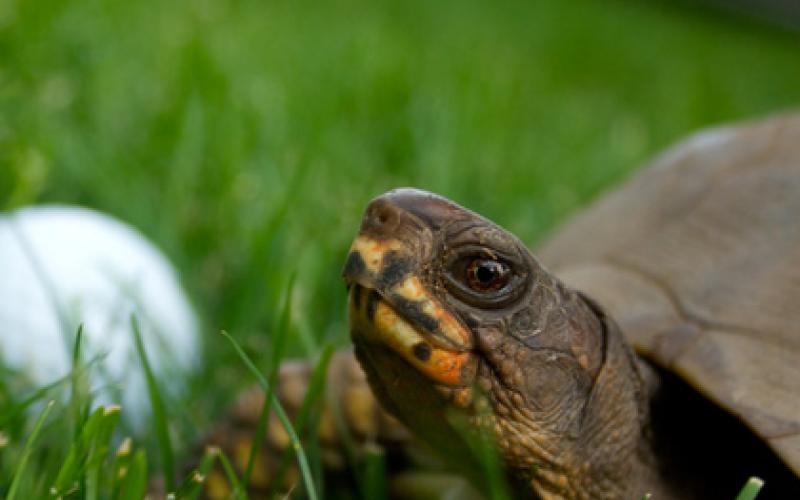Finding wildlife habitat in urban areas

Finding wildlife habitat in urban areas
Scientists find that golf courses can be suitable nesting habitat for turtles.
Original Paper
Shawna M. Foley, Steven J. Price and Michael E. Dorcas. "Nest-site selection and nest depredation of semi-aquatic turtles on golf courses." Urban Ecosystems. Number 15. Issue 2. (2012). 489-497, DOI: http://dx.doi.org/10.1007/s11252-012-0229-4
Habitat loss, fragmentation, and degradation due to urbanization are among the greatest threats to wildlife population sizes and species richness. Urbanization can impede on wildlife dispersal, migration, and the ability to reach mating or spawning grounds. Urbanization and habitat fragmentation can be especially deadly for species that need to move to successfully reproduce such as semi-aquatic turtles. After examining how painted turtles in North Carolina select their nesting sites in urbanized and rural areas, a team of scientists have reported in Urban Ecosystems on the suitability of urban places as animal habitat and recommended ways that built-up environments can better serve wildlife.
The scientists found that the female turtles were not randomly selecting their nesting sites; vegetation at sites in the turtle's immediate habitat around the pond was different from those at their nesting sites. The turtles had a greater preference for landscaped sites - mulch cover and mowed rough grass – and mowed grass instead of the golf green and bare ground such as sidewalks, pavement, and sandpits. Surprisingly, there was little evidence suggesting turtles built nests in wetlands or natural vegetation such as unmowed grass or weedy or leafy cover. Furthermore, the turtles were not likely to nest in places with canopy cover.
To compare depredation of nesting sites on the golf course with those in urban and rural areas, the team set up artificial nests at nine ponds in the Davidson area: three on golf courses, three in urban areas, and three in rural areas. The scientists placed quail eggs and water with female turtle scent in the artificial nests at varying distances from the edge of each pond. The daily survival rate between nests and the urban, golf, and rural ponds did not differ greatly. Pond type, when accounting for distance, did not seem to be related to survivorship. Furthermore, survivorship comparing only distance from the pond did not appear related to predation rates. The nests on golf courses didn't receive higher rates of depredation than those in urban or rural areas.
The scientists conclude that golf courses, despite being areas of high human disturbance, can be useful urban habitats for wildlife. The scientists' model showed that nests on golf courses receive no higher rate of depredation than nests in urban or rural areas. The scientists postulate that beyond being easy to dig through, mulch may provide nests with good soil temperature and moisture that female turtles need to achieve nesting success. Furthermore, mulched parts of golf courses are less frequently visited by humans, lawn mowers or golf carts, making them relatively safe for turtle nests. By considering research findings like these, landscape architects and golf course managers can build turtle friendly urban areas that enhance nesting and hatching opportunities while providing the aesthetic benefits of wildlife viewing and the ecosystem services associated with turtles. By designing highly modified urban areas with considerations for animal needs, we may be able to make them even more conducive for wildlife.




